Laying Out the Future
Native American business brings layout function in-house to deal with survey delays, gains a host of additional benefits.
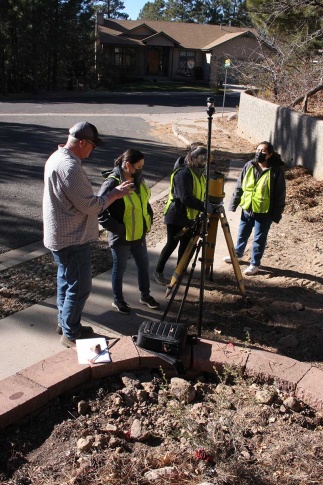
A proverb of the Native American Hopi Nation says: “All dreams spin out from the same web.” While the interpretation of that saying is open to discussion, one takeaway could be that our aspirations are — and should be — for the common good. Put another way: as one gets better, we all should get better. For Eddie Calnimptewa, that sense of interconnectedness drives the architectural design business he founded nearly a decade ago. It also is fueling his drive to create a planned-community in Tuba City, Arizona which, when complete, will include housing, tribal government offices, community facilities, services, and more, to people in the area. To self-perform the various layout facets of his work — made necessary by months-long surveyor backlogs in the area — his company, Native American-owned Terraform Development, LLC, turned to an automatic layout solution from Topcon Positioning Systems. As a result, the backlogs are now a moot point, the company is benefiting from a new revenue stream, and Calnimptewa’s dream of betterment for others is finally taking flight.
Frustration Yields Motivation
Established in 2013, Terraform was born out of the frustration Calnimptewa had experienced in a previous position. As the project director for a local nonprofit development company, he and that company had just wrapped up work on a $12 million, hotel and restaurant.
“My background is actually in architecture,” he said. “But as the project manager/director for that hotel job, I learned quite a bit about tribal regulations regarding procurement and the development process on native land. It is far more challenging than I ever could have imagined. But, being equal parts Hopi and Navajo, it motivated me to find ways to deal with — or eliminate wherever possible — some of that tribal politics and help development in the area. The best way to do that would be with my own company, so Terraform was born.”
Today, Terraform operates with a staff of seven whose specialties include civil design, structural/civil engineering, drafting, business management, interior design and, of course, architecture. It offers an impressive list of services ranging from project visualization/cost estimating to site analysis to residential design to construction management, and more.
“Though the name Terraform sounds futuristic, at its roots it simply means trying to enhance life on this planet,” said Calnimptewa. “The Hopi culture centers around respect for the planet and its resources — we strive to do the same in all our projects.”
Time Waits for No Man
While capable of doing traditional layout for their own projects, for their first seven years in operation, when confronted with a need for that service, the firm would generally hire a surveyor. According to Calnimptewa, however, in the 2019-2020 time frame, a troubling pattern started to emerge.
“I’m sure it was due to the pandemic, but anytime we needed a surveyor for a project, the wait times were anywhere from three to five months,” he said. “Obviously, our schedule can’t withstand a delay of that length, so we started looking at the technology available to handle that function ourselves. Mind you, we are not licensed surveyors, but we wanted a tool that could verify design layouts and relay information to engineers for their design work. ”
After a lot of research and a failed attempt at renting equipment through a major manufacturer — which pushed an already-delayed schedule back even further — Calnimptewa came upon what seemed to be the answer they needed: a Topcon LN-150 Layout Navigator. He contacted Branco Machinery, the regional Topcon dealer and was quickly being visited by Bill Stull, the company’s specialist in survey and layout.
“The fact that the LN-150 was auto-leveling sold me right away,” he said. “Bill came out to our office in Flagstaff, gave us a couple of quick but thorough lessons on setup and operation and we were off and running. The unit matched the capabilities of the one we’d rented, as far as topo, layout and so on, but it was just so much easier to operate. Plus, Bill and the Branco team were — and continue to be — amazingly supportive. I tell my colleagues in a similar position as we are that, if they are considering an LN-150, they have to buy it from Branco just for the support.”
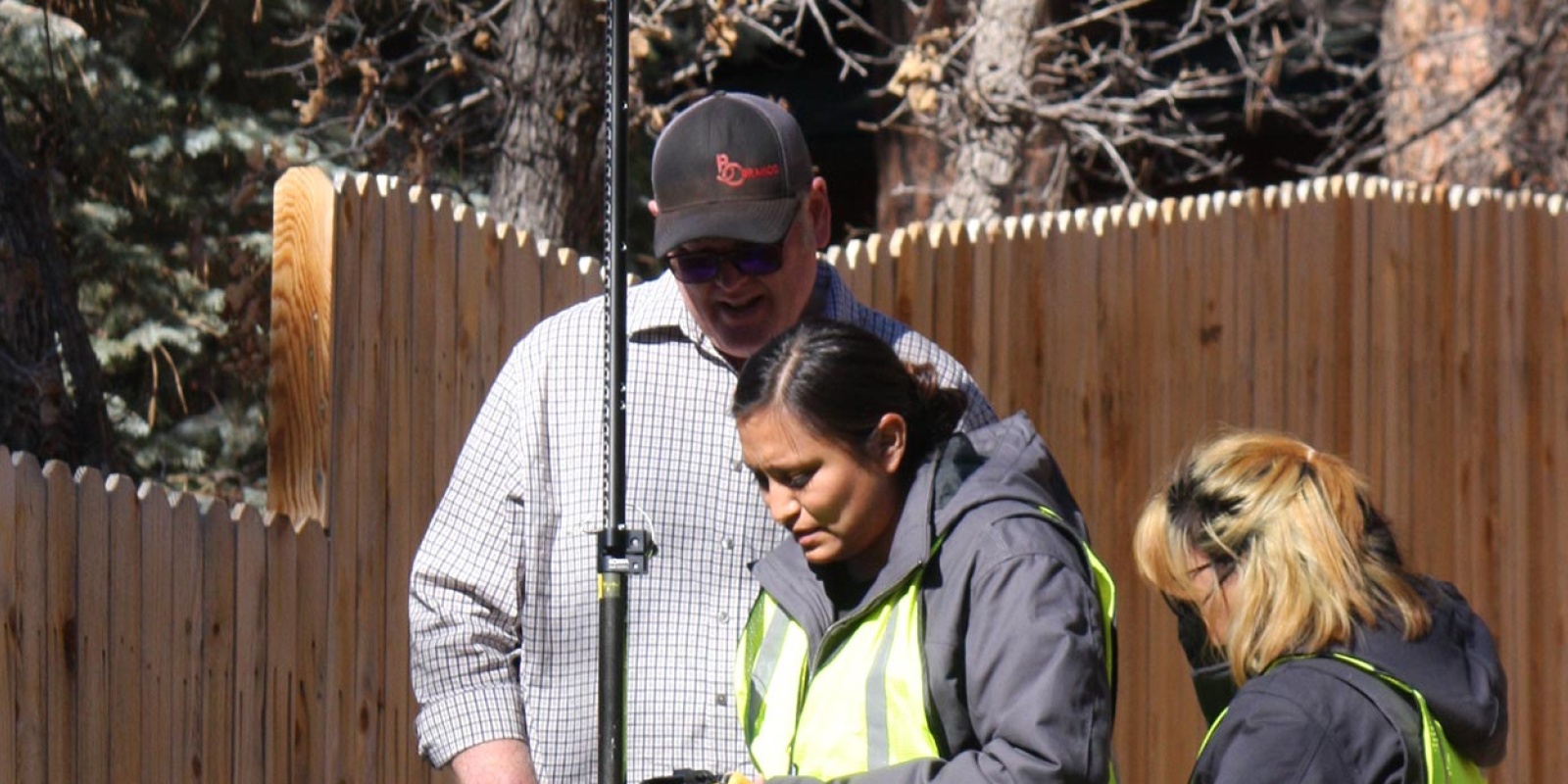
“Though the name Terraform sounds futuristic, at its roots it simply means trying to enhance life on this planet.”
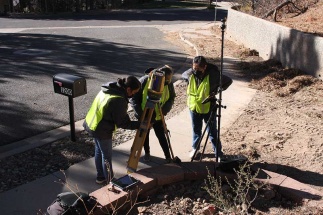
The Simple Explanation
The instrument that Terraform was so enamored of, the LN-150, is designed to easily automate and execute layout and construction verification processes. Doing so not only increases productivity and provides consistent accuracies, users like Terraform will also realize savings from reduced labor hours and costly re-works. Working with a prism/pole and a Topcon FC-5000 field computer, Calnimptewa and his team are getting real-time 3D positioning at up to a 130m working radius.
The debut project for the layout navigator, performing infrastructure layout for a civil engineer in Colorado, immediately proved the wisdom of their decision. Roughly two weeks behind schedule at that point, Terraform set up with the civil crew right on their heels.
“We were laying out manholes and line of sight, elevations, etc. and before they could even get 100-feet in, we were almost ¾ of the way done laying out the rest of the line,” said Calnimptewa. “The ability to nail points so quickly was amazing to us and it actually brought us back into schedule — despite being close to two weeks behind at the time. It was an impressive thing to see.”
Taking the Stairs
That Colorado experience opened the door for Terraform to use the layout tool on additional projects, including data collection for civil construction and engineering firms. In fact, the company would be hard-pressed to name a project of which the LN-150 was not a part. On a recent job in Page, Arizona, about two hours north of Terraform’s Flagstaff office, for example, a tour company client had asked them to design a stairway — part natural, part man-made — from the surface down into a slip canyon.
“The canyons typically have a series of ladders that take people down, but this one was bigger, so we were being asked to design an entire stairway several hundred feet down into the canyon,” said Tara Nez, one of Terraform’s architectural interns and lead architect on the project. “I went out with Tash (Tashina Sandoval, Terraform surveyor intern), who flew our drone while I laid the structure out with the LN-150. We brought the data back to the office, imported it into our 3D modeling software, and combined it with the Topcon files to create our 3D surface. The LN-150 really helped with that project. A drone alone typically works for that type of project but, because the surface was so steep, the Topcon unit gave us better accuracies than even the drone-mapping could.”
Without the layout navigator, added Calnimptewa, their options would have been to rely solely on the questionable data from the drone or lay the stairway out using traditional techniques.
“We would have had to create a grid out there and gather our points in that manner,” he said. “That would have taken at least a week and a half to do. Mind you, even with the LN-150, we were planning to spend the entire day at the canyon — we even packed a lunch for the day’s work. Instead, the progress was fast and easy: a point here, mark it; a point there, mark it. We only had to move the unit twice and had the entire thing laid out in two hours. We had a nice snack for the ride back.”
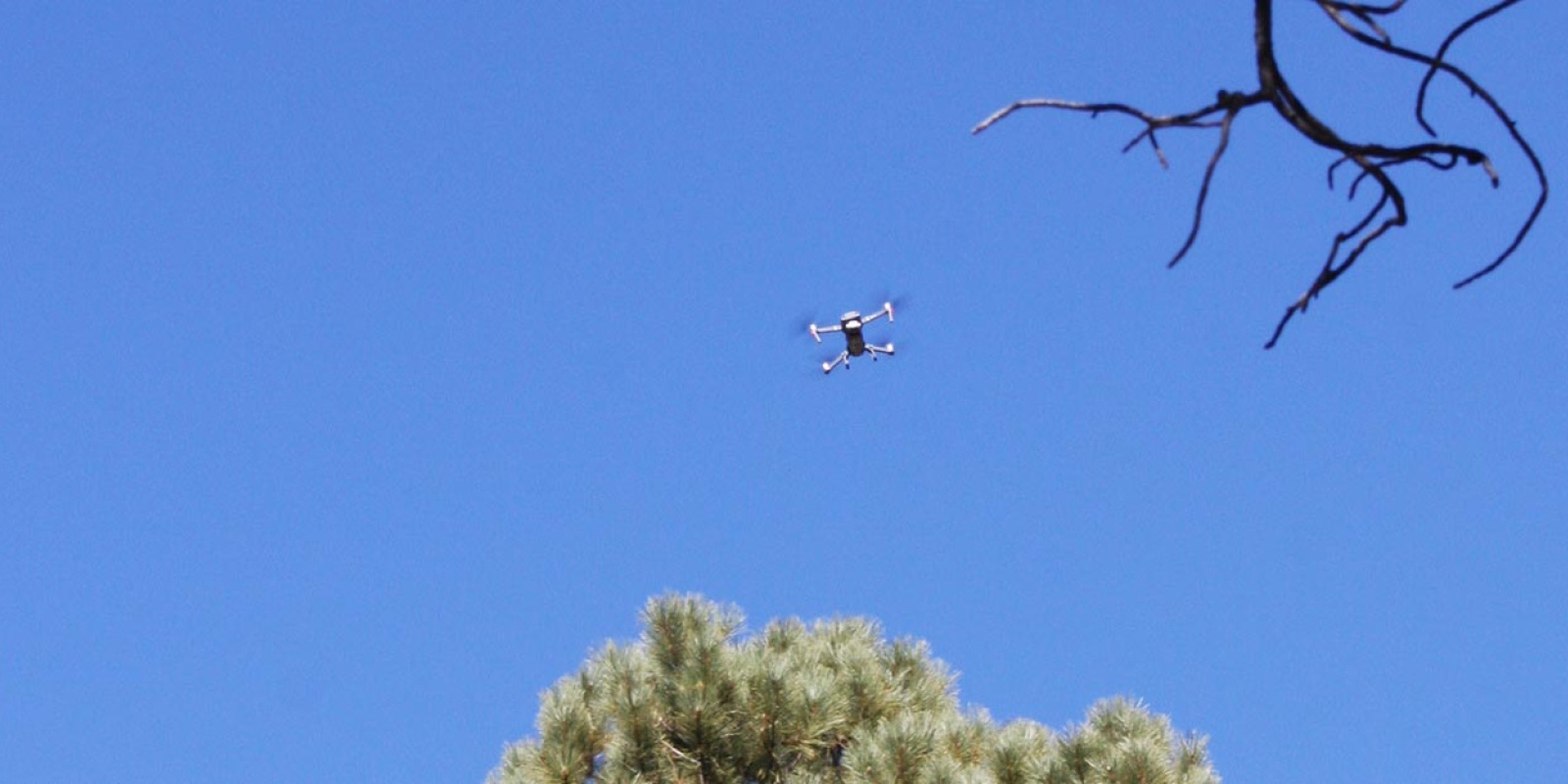
“While we would have been waiting for months for a surveyor to come out, this layout solution allowed us to get it done when we needed it.”
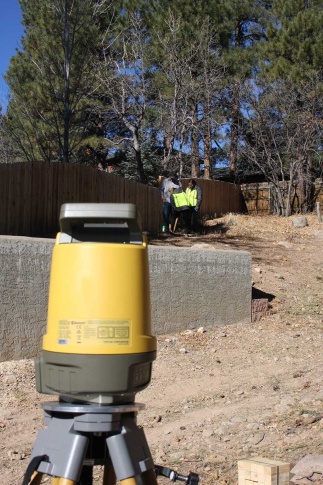
If the House Fits . . .
Closer to home, Calnimptewa’s team recently proved that a vacant lot, long viewed as being unsuitable for any type of development, could, in fact, be an excellent home site.
“The owner of this lot was having trouble selling it,” said Shandiin Lake, another of Terraform’s interns and job captain for the project. “No one could picture a house on this property with its strange angles and sloping topography. So they came to us asking for our design input. We did a quick design and, using the LN-150, laid out the house to prove that it could work.”
With that design as proof of feasibility, the owner was able to quickly sell the once problematic lot.
“While we would have been waiting for months for a surveyor to come out, this layout solution allowed us to get it done when we needed it,” she said. “It also proved that we can now keep things moving along without a survey-related delay— and do it with just one person. That’s a great ability to have.”
Living the Dream
Canyon stairways, utility work and residential lots aside, the crown jewel on Terraform’s job sheet is the Tuba City planned-community project which, according to Calnimptewa, is at last poised to begin. The project is named TC8, which stands for Towering Cliffs, a nod to the Towering House Navajo clan (Kinyaa'áanii) with which most of Terraform’s staff identifies, and the site’s eight-acre size.
“Along with my business partner, Stanford Lake, we are creating TC8 with a number of goals in mind,” said Calnimptewa. “We want it to be a place for those who are coming back to the reservation after having left for educational or work-related purposes; often, getting housing established can be very difficult. So we are trying to provide a space for them to have that, while at the same time promoting a real sense of community and making an economic impact. We’ve planned for this for a long time; we’re excited to see it happening. The LN-150 is already at work there, laying out road access and primary utilities.”
Calnimptewa is not shy about citing the impact the new solution has had on Terraform’s operation. He said the additional services they can provide to their clients and owners — on site preliminary design layout, as-builts that are even more accurate than what customers are used to, the ability to relay info to other consultants or engineers — have provided a very nice revenue stream that did not exist before.
“There is a big demand from us for these services now,” he said. “To be able to do some of the things we can do with the LN-150 and not have to rely on a full survey crew saves our clients both time and money. And that ultimately benefits everyone here. It’s been a huge plus for the operation.”


